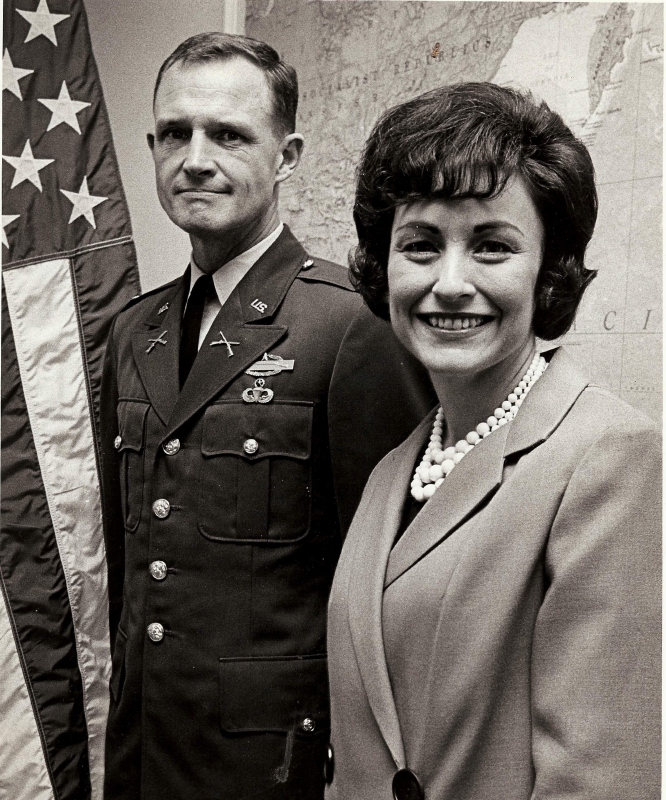
Julia Compton Moore was the wife of Lieutenant General (Ret.) Hal Moore, a United States Army officer. Her efforts and complaints in the aftermath of the Battle of Ia Drang prompted the U.S. Army to set up survivor support networks and casualty notification teams consisting of uniformed officers, which are still in use.
Born at Fort Sill, Oklahoma, Julia (“Julie”) Compton Moore was the only child of Army Colonel Louis J. Compton and Elizabeth Boon Compton. Mrs. Moore was a graduate of Chevy Chase Junior College, Chevy Chase, Maryland and attended the University of North Carolina at Chapel Hill, as a member of the Pi Phi Sorority, prior to her marriage.
Wherever her husband was stationed, Mrs. Moore became an integral part of the community, serving as a Brownie and Girl Scout Leader, Cub Scout Den Mother and Red Cross volunteer in the Army hospitals. She supported the day care centers and worked with the wives clubs to take better care of the enlisted soldier and his family. Mrs. Moore was especially active in setting up the Army Community Service organizations that are now a permanent fixture on all army posts and which assist each soldier as they process into their new duty stations.
Since the age of 12, Mrs. Moore has sent the men she loved to war. Her father fought in Europe in World War II, her husband was wounded in Korea and Vietnam, and one of her sons fought with the 82nd Airborne Division in Panama and the Gulf War.
Her early and life-long experience with separation and the risk of loss in war provided her a unique empathy with, and understanding of, the lives of families in war. Mrs. Moore was married under crossed sabers in 1949 to Hal Moore, who later commanded the first battalion, 7th Cavalry in the battle of the Ia Drang Valley in Vietnam in 1965.
The Ia Drang was the first major engagement between the forces of the United States and the forces of the People’s Army of Vietnam. Over 1,000 Vietnamese were killed, at the price of 121 American lives. The impact of this battle at home in Columbus Georgia, where Julie lived with her five young children, was depicted in the 2002 Paramount release, “We Were Soldiers,” and brought to millions of Americans the carnage of combat and its terrible toll on families. Notices of combat deaths in Columbus were delivered to wives and families typically isolated in small apartments, trailer parks, and one-room walk-ups.
